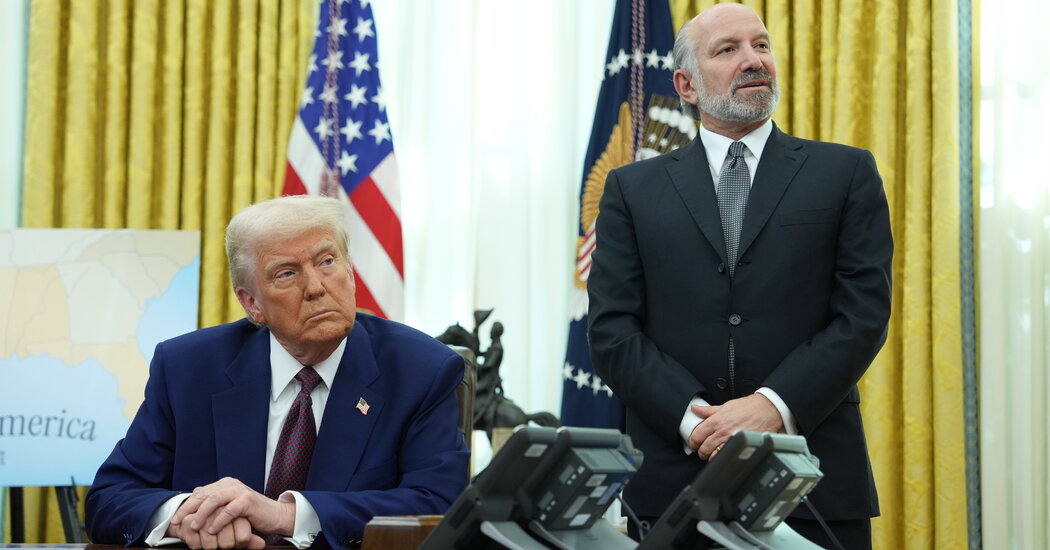The Shifting Landscape of Global Trade: Understanding Trump’s Tariff Policy
When President Trump announced his intentions to impose new tariffs on imports from various countries, he ignited a significant challenge to the global free trade system, which has been the bedrock of international commerce since the conclusion of World War II. This pivotal moment in trade policy requires a nuanced understanding of its implications, not just for the United States, but for the entire global economy.
Tariffs: The Basics
At its core, a tariff is a tax levied on imported goods, making foreign products more expensive and thereby less competitive compared to domestic offerings. For decades, the United States has enjoyed the status of the world’s largest importer, consistently purchasing more from other countries than it sells. Trump’s strategy hinges on reversing this trade imbalance, positing that by imposing tariffs, the U.S. can gain leverage over its trading partners.
The thinking is that nations with significant exports to the U.S. might be hesitant to retaliate aggressively against American tariffs due to the potential backlash on their own economies. However, this unilateral approach risks destabilizing the delicate web of global trade relationships that have developed over decades.
Potential Global Ramifications
While the Trump administration might envision a path to economic rejuvenation through these tariffs, many trade experts express concerns about a looming global shift toward protectionism. If other countries decide to retaliate by implementing their own tariffs, it could precipitate a trade war, raising prices for consumers worldwide. The capacity for countries to trade freely and access low-cost goods may be threatened, undermining the core principle of free trade.
The implications extend beyond immediate economic indicators; they challenge the foundational ethos of organizations like the World Trade Organization (WTO). Established in 1993 to regulate global trade rules and tariff agreements, the WTO finds itself at a crossroads. The effectiveness of its framework is now contingent on how member nations respond to unilateral actions that contravene established trade norms.
The Role of the WTO
As trade dynamics evolve, the WTO’s ability to mediate disputes and foster collaborative agreements is increasingly jeopardized. Deborah Elms, head of trade policy at the Hinrich Foundation, expressed a sentiment shared by many experts: “I would say the W.T.O. is toast, but what matters now is how other members respond.” Member countries are faced with a critical choice: uphold the principles of free trade or follow suit in disregarding time-tested practices and regulations.
Failing to maintain a collective commitment to free trade could lead to a fragmented global economy, where countries engage in tit-for-tat tariffs, ultimately harming consumers and businesses alike. Such dynamics not only disrupt supply chains but may also stifle innovation and competitiveness in the long run.
Consumer Impact
The potential fallout from increased tariffs will likely be felt by consumers throughout the United States and beyond. As import prices rise due to these taxes, industries that rely on foreign goods may pass those costs onto consumers. Everyday products—from electronics to clothing—could become significantly more expensive. The promise of free trade—an economy where consumers can purchase from the lowest-cost producers—stands at risk.
This shifting landscape compels consumers to reconsider their purchasing behaviors in light of escalating prices. Transitioning to domestic products may not always be viable, particularly when local alternatives lack the scale or capacity to meet demand.
Looking Ahead: A Critical Moment for Global Trade
As Trump’s tariffs loom on the horizon, countries around the world must navigate the complex implications of this policy shift. The potential for a cascading effect into comprehensive protectionist measures poses profound questions not only about trade practices but about global cooperation and integration.
The next steps taken by the international community are critical. Will nations band together to reaffirm their commitment to free trade principles, or will they choose to engage in competitive devaluation through tariffs? This moment is not just a test of economic policy; it is a trial of political will, focused on maintaining a cooperative global economic framework amid rising nationalism and isolationist tendencies.
Navigating this intricate landscape will require vigilance and collaboration, as the world watches how these events unfold in real-time. The outcomes could reshape international trade for generations to come, fundamentally altering how countries interact economically and politically.


